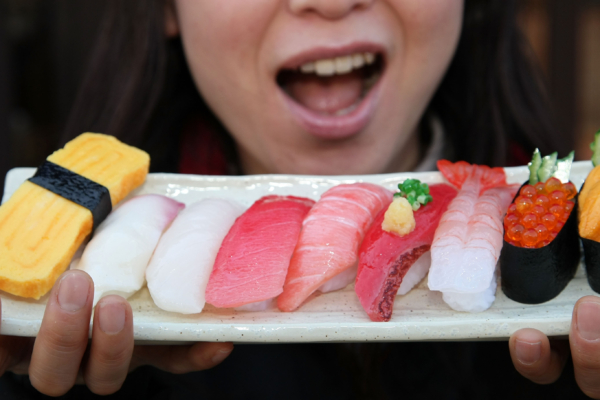Japan’s iconic dishes such as sushi, onigiri, and yakitori don all revolve around rice and are beloved by tourists. However, as the number of tourists has surged this year, Japan is facing its most severe rice shortage in decades.
According to a report released by the U.S. Department of Agriculture last week, “Japan has been struggling to address the shortage of table rice during the summer of 2024. Demand exceeding production over the past three years has led to inventory levels dropping to the lowest in over twenty years, resulting in empty shelves in supermarkets.” This situation was further exacerbated after a rush of panic buying following a strong earthquake in early August.
Reports indicate that supermarkets frequently ran out of white rice in August, with stores limiting each person to only one bag. Local media outlet NHK attributed part of the rice shortage to the influx of tourists, who have driven up demand for sushi and other rice-based dishes. In August, the price of rice reached 16,133 Japanese yen per 60 kilograms (approximately $112.67), a 3% increase from the previous month and a 5% increase since the beginning of the year.
According to CNBC, Japan welcomed a record-breaking 17.8 million tourists in the first half of this year, significantly higher than pre-pandemic levels. Based on Japanese tourism statistics, this trend continues, with July recording a record high of 3.3 million inbound tourists, significantly increasing the demand for Japanese cuisine.
Oscar Tjakra, a senior analyst at Rabobank, estimated that the rice consumption by tourists increased from 19,000 tons between July 2022 and June 2023 to 51,000 tons between July 2023 and June 2024.
“Tourist consumption is indeed on the rise,” said Youichi Uchikawa, Deputy General Manager of Sales at main rice wholesaler Shinmei, speaking to Nikkei Asia. He mentioned that their subsidiary Genki Sushi saw an increase in inbound customers, leading to an increase in the supply of rice to their chain stores.
Uchikawa added that some of Shinmei’s clients, including convenience stores, have also noticed a growing popularity of onigiri among foreign visitors.
Food & Life, the company operating Japan’s largest conveyor belt sushi chain Sushiro, also told Nikkei that their group’s rice procurement has been increasing, ensuring a stable supply through signing mid to long-term contracts with suppliers.
Aside from the record number of tourists, the recent surge in demand is affected by several short-term factors.
According to Uchikawa, aside from tourists, domestic demand has been strong since last year. The sales of household Japanese rice in April by the wholesaler increased by 10% compared to the same period last year. This was because the price of rice remained relatively stable compared to other staple foods until a significant increase in August.
Since 2014, with a declining population, the average annual consumption of domestic rice in Japan has decreased by about 100,000 tons every year. However, as of June this year, domestic rice demand increased by 110,000 tons, a 1.6% increase, reaching 7.02 million tons.
Yet, according to data from the Japanese Ministry of Agriculture, Forestry and Fisheries, private rice stocks in Japan were at 1.56 million tons as of June, the lowest in years.
Tjakra stated that with the retirement of the older generation of rice farmers and a decrease in young people entering the profession, rice production in Japan has been declining. The analyst added that a series of heatwaves and droughts in the second half of last year also impacted the harvest.
Joseph Glauber, senior research fellow at the International Food Policy Research Institute, mentioned that although rice yields have decreased and the appetite for sushi among foreigners has increased, domestic rice policies remain a key underlying factor contributing to the overall decline in supply.
“The Japanese rice economy is largely insulated from the world market,” Glauber told CNBC.
To protect rice farmers, Japan imposes tariffs as high as 778% on imported rice. Although Japan is required to import approximately 682,000 tons of rice annually according to World Trade Organization regulations, this rice is mainly used for processing and animal feed, barely entering the Japanese consumer market.
Meanwhile, according to Tjakra of Rabobank, Japanese rice exports surged sixfold from 2014 to 2022, reaching nearly 30,000 tons.
For the immediate outlook on supply and demand, the Japanese Ministry of Agriculture, Forestry and Fisheries expects the rice shortage to alleviate as more crops enter the market this month.

